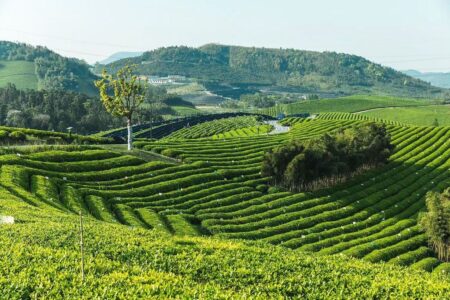November 2019 Green Coffee Report

Image courtesy of the Cerrado Coffee Growers Federation
This November saw a technical rally in the Arabica futures market and a slew of fresh fundamentals. With the conclusion of the 2018-2019 global coffee crop in September, focus shifted to the 2019-2020 crop.
Industry estimates have mostly forecast the transition to a supply deficit with demand outweighing supply as Brazil entered its “off-year” in the biennial cycle and consumption continuing to rise around two percent per year.
However, both CoffeeNetwork and the USDA (United States Department of Agriculture) released reports that set themselves apart from the rest of the industry estimates, maintaining their expectation of a surplus.
The USDA released its biannual World Coffee Report, in which it forecast global production for the 2019-2020 crop year at 169.3 million bags, up 0.1 percent from the June estimate of 169.1 million bags and down 3 percent (or 5.3 million bags) from the previous year. Global consumption forecast is at a record 166.4 million bags, meaning the 2019-2020 coffee year will see a 2.9 million bag surplus.
Taking into account the figure of 53 million bags for Brazil’s 2019-2020 crop, as provided as the result of INTL FCStone’s crop tour, CoffeeNetwork estimates global production to be somewhere around 165 to 166 million bags. For consumption, CoffeeNetwork believes that a figure of 22 million bags per year for Brazil is about four million bags too high. Based on a figure of 18 million bags consumed per year in Brazil, and lower consumption in the US driven by the single-serve market, our estimate for global consumption is between 162 and 163 million bags, notably lower than other industry estimates.
At CoffeeNetwork, we have challenged consumption figures and the overall sentiment that demand will rise 2 percent. Rising consumption expectations have spurred a slew of forecasts of a supply deficit for the 2019-2020 global crop year. But, if we are in a deficit, why have we not seen a significant dwindling of stocks? Instead, we have seen stocks in consuming countries, or non-certified stocks, remain steady.
- Stocks in Europe have been steadily rising.
- Stocks in Japan are up nearly 14 percent year on year.
- GCA (Green Coffee Association) still near record highs. For November, inventories were 3.5 percent or 254,041 bags lower than the previous month but still 13.8 percent or 841,794 bags higher from November 2018.
With these figures, CoffeeNetwork sees a global supply surplus of between two to three million bags for the 2019-2020 crop year.
Looking ahead, focus will shift to Brazil’s 2020-2021 crop, with early estimates already ranging from 60 to 70 million bags. While the crop did see some cold snaps in July followed by dryness in October, consensus so far is that the Arabica crop could be similar to the last “on-year” crop of 2018-2019 and Robusta production could set a new record. With many firms planning crop tours for early next year, more forecasts should begin to circulate the market in the coming weeks.
For more in-depth coffee news, insight and analysis, please sign up for a free two-week Coffee Network trial at: www.coffeenetwork.com.


Both graphs courtesy of INTL FCStone
- This report was compiled by Alexis Rubinstein, senior editor, CoffeeNetwork, a division of New York, New York-based INTL FCStone, a Fortune 500 company focused on diversified financial markets. Alexis may be reached at: Alexis.Rubinstein@ intlfcstone.com.



